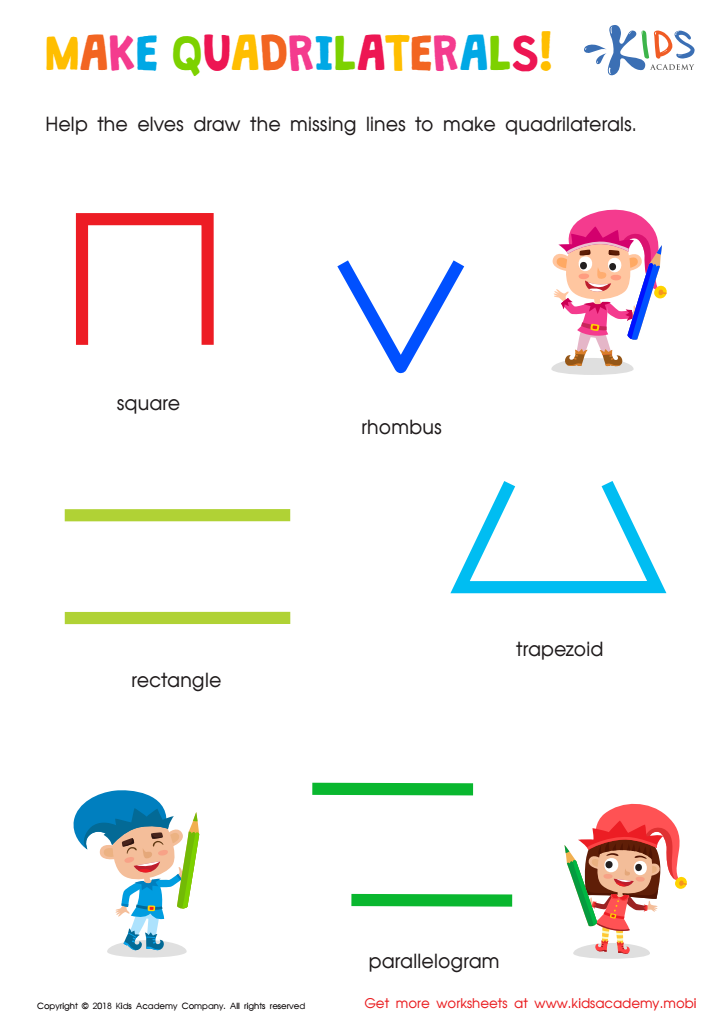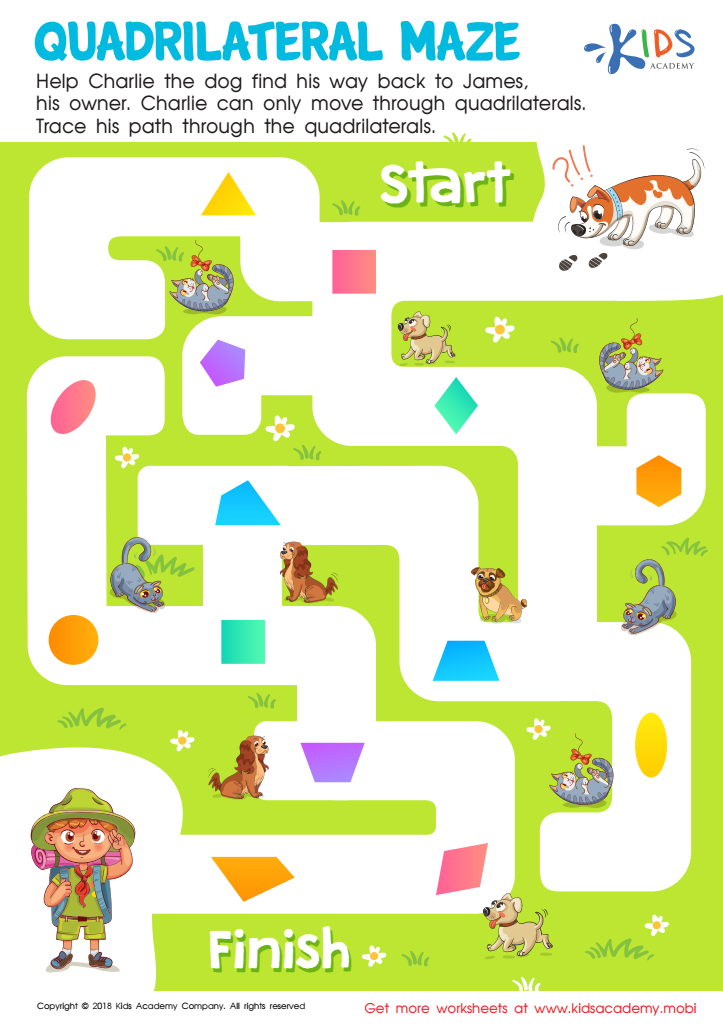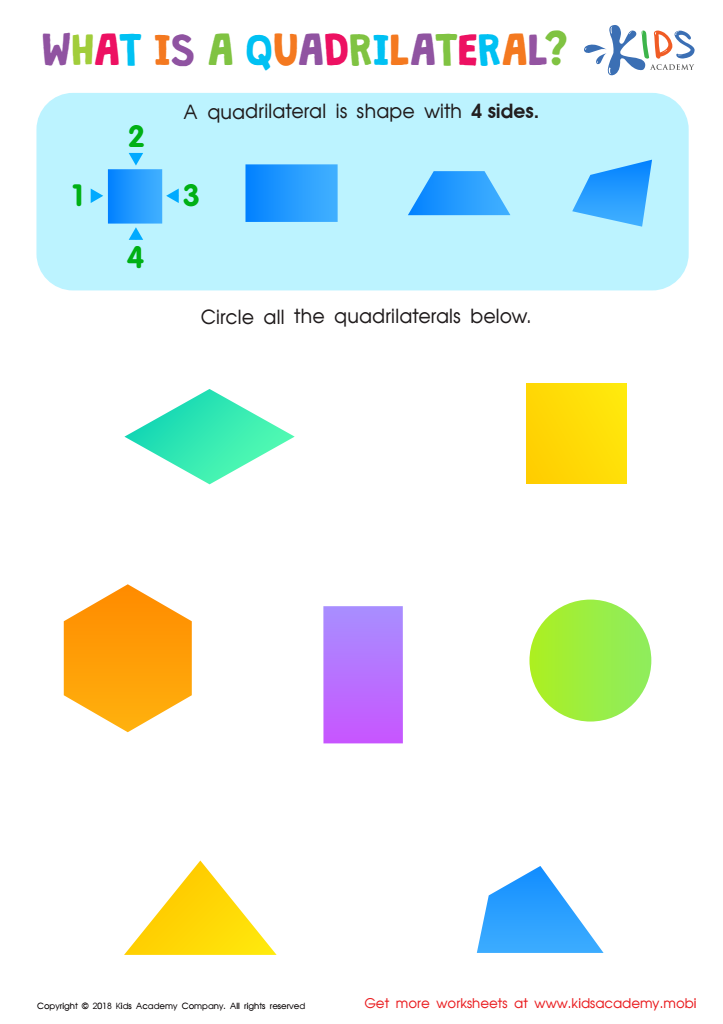Understanding quadrilaterals Geometry Worksheets for Ages 5-9
4 filtered results
-
From - To
Explore our engaging "Understanding Quadrilaterals" geometry worksheets designed specifically for children ages 5-9. These activities aim to introduce young learners to the fascinating world of quadrilaterals, including squares, rectangles, trapezoids, and more! With colorful illustrations and interactive exercises, children will enhance their shape recognition and develop critical thinking skills. Our worksheets promote foundational math concepts while making learning fun and accessible. Perfect for homeschooling or classroom use, these resources empower students to confidently understand and identify quadrilaterals in their everyday environment. Download now to inspire a love for geometry in your little ones and boost their math skills effectively!


Make Quadrilaterals Worksheet


Identify Quadrilaterals Worksheet


Quadrilateral Maze Worksheet


What Is a Quadrilateral? Worksheet
Understanding quadrilaterals is essential for children aged 5-9 as it lays the groundwork for their mathematical development. At this age, children are naturally curious about shapes and patterns in their environment. Teaching them about quadrilaterals—four-sided figures like squares, rectangles, and trapezoids—helps cultivate spatial awareness and critical thinking skills. By recognizing and classifying different shapes, kids learn to compare dimensions and understand geometric relationships, which are fundamental to more advanced math concepts later on.
Moreover, geometry fosters creativity. Engaging with quadrilaterals through activities such as drawing, building models, or playing with shape-related games makes learning fun and interactive. This approach not only reinforces mathematical concepts but also enhances problem-solving skills as children explore how different shapes function together.
For parents and teachers, promoting geometric understanding is crucial as it supports early literacy and numeracy. Incorporating discussions about shapes in everyday life builds a strong foundation for future learning, making for confident and competent learners. Understanding quadrilaterals also connects to various disciplines, including art and science, demonstrating the relevance of math in diverse contexts. Hence, prioritizing geometry in early education yields profound long-term benefits.
 Assign to My Students
Assign to My Students






























